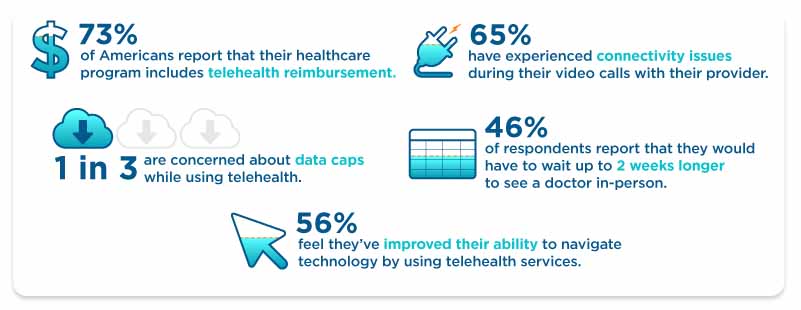Telemedicine has been used for years in small towns and rural areas, but the COVID-19 pandemic pushed telehealth into the forefront. Overnight, remote medical care became the safest healthcare option for patients and healthcare providers. During the spring of 2020, telehealth appointments in the US went from making up less than 5% of doctor visits to over 90%.1
In fact, in a recent survey by SatelliteInternet.com, over half of respondents said they’re more likely to seek medical advice if there is a telehealth option.
Of course, telehealth can’t reach everyone equally: you need a decent internet connection to have an e-visit with your doctor. And 27% of Americans don’t have home internet.2 Even among those with home internet service, 65% have experienced technical problems during virtual visits, and one in three are concerned about internet data caps while using telehealth services. You need around 30 Mbps internet speed to use the internet without frustrating loading times or buffering.



